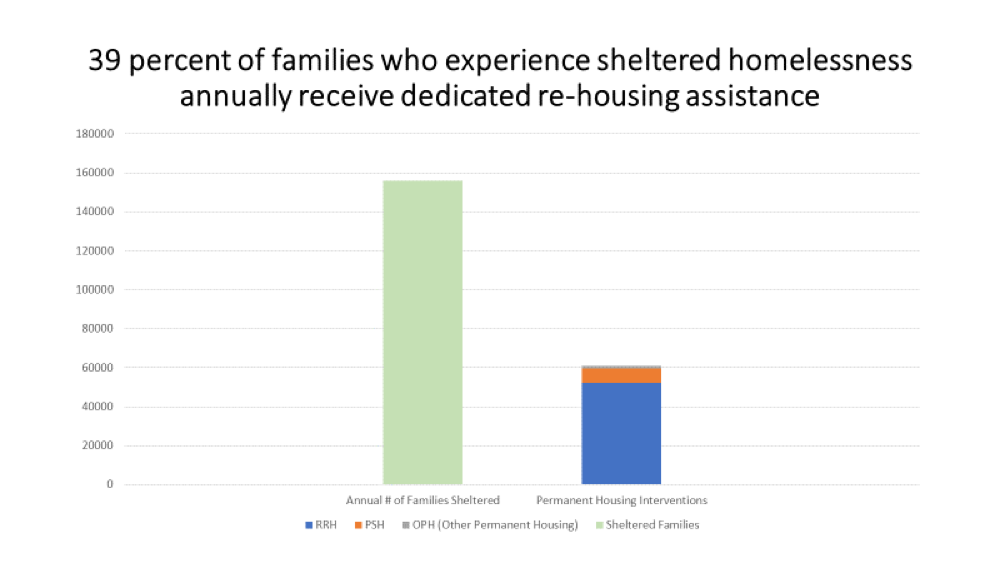Last year, approximately 52,000 families were assisted out of homelessness with rapid re-housing assistance. Another 7,300 families with high needs were assisted into permanent supportive housing and 1,300 families received other permanent housing assistance to exit homelessness. This is a marked improvement over previous years when little was available to help families other than safe temporary respite in emergency shelter and transitional housing. However, it remains far short of the need. Almost 156,000 families (with more than 500,000 family members) experience a shelter or transitional housing stay over a 12- month period but fewer than 4 in 10 of those families will receive dedicated housing assistance to escape homelessness.
Source: Alliance Analysis of HUD Annual Homeless Assessment Report Part 2 and HUD 2019 Housing Inventory Chart.
Without enough resources to help families reconnect to housing, homeless service providers can’t do their jobs: shelter units quickly fill up, but there are not enough resources to help families quickly exit those units. As a result, families stay homeless longer and newly homeless families can’t locate a safe place to stay because shelter units are full, forcing them to remain in unsafe conditions or turn to unsheltered homelessness.
Ensuring homelessness is a short, one-time experience requires greater investment in permanent housing solutions. This includes funding for the McKinney Vento Homeless Assistance Program and substantial investments in Housing Choice Vouchers. States and localities can also direct their resources, including Temporary Assistance for Needy Families (TANF) and funding to help families withstand the impact of the COVID-19 crisis, to help families currently experiencing homelessness to quickly reconnect to safe, stable permanent housing.
Stay Updated: Solutions, Stories, and Ways to Make an Impact
Sign up to receive updates on the Alliance’s work, including the latest research, advocacy efforts, and real stories of progress — plus ways you can help drive lasting change.












